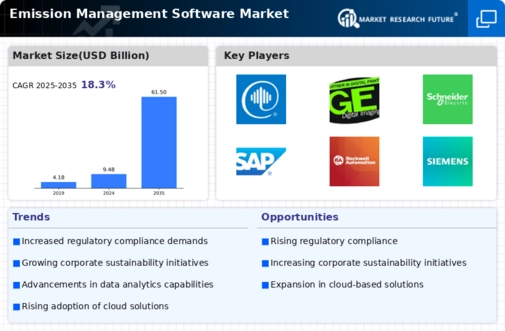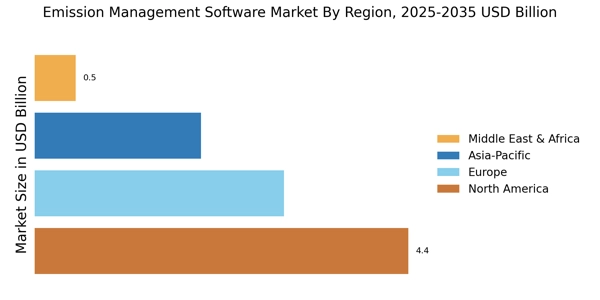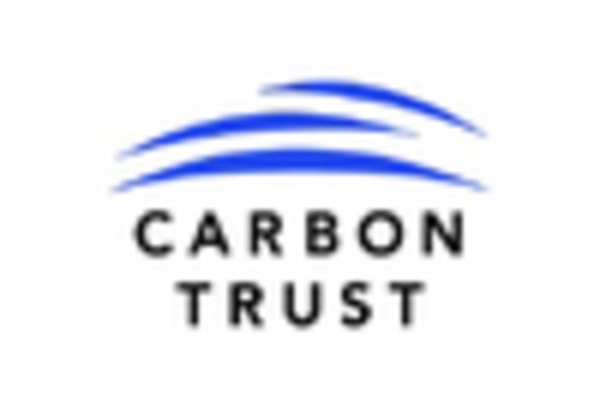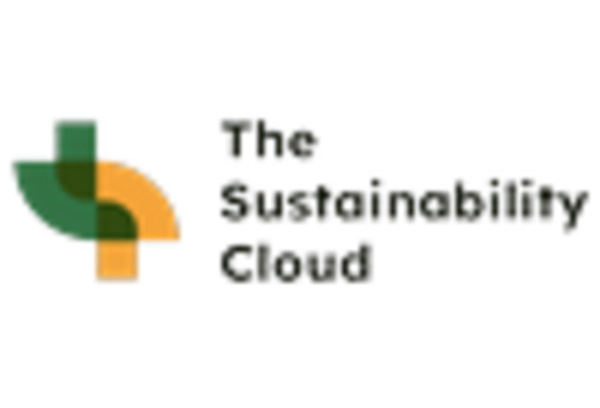Cloud-Based Solutions and Accessibility
The rise of cloud-based solutions is transforming the Emission Management Software Market by enhancing accessibility and scalability. Organizations are increasingly adopting cloud-based platforms to manage their emissions data, as these solutions offer flexibility and cost-effectiveness. The ability to access emission management tools from anywhere facilitates collaboration among teams and streamlines reporting processes. Furthermore, cloud solutions often come with lower upfront costs, making them attractive to small and medium-sized enterprises. As more organizations recognize the benefits of cloud technology, the Emission Management Software Market is likely to see a significant uptick in adoption rates. Market analysts suggest that the cloud segment could account for over 40% of the total market share by 2026, underscoring the shift towards digital transformation in emission management.
Integration with Existing Business Processes
The integration of emission management software with existing business processes is a crucial driver for the Emission Management Software Market. Organizations are increasingly recognizing the importance of aligning emission management with their overall operational strategies. This integration allows for more efficient data flow and enhances the accuracy of emissions reporting. By embedding emission management into their core processes, companies can identify inefficiencies and implement targeted reduction strategies. This trend is likely to propel the Emission Management Software Market forward, as organizations seek comprehensive solutions that fit seamlessly into their operations. Analysts predict that the market could expand by approximately 18% in the coming years, driven by the need for integrated approaches to emission management.
Technological Advancements in Software Solutions
Technological advancements are playing a pivotal role in shaping the Emission Management Software Market. Innovations such as artificial intelligence and machine learning are enhancing the capabilities of emission management solutions, enabling organizations to analyze data more effectively and optimize their emission reduction strategies. These technologies facilitate real-time monitoring and reporting, which are crucial for compliance and operational efficiency. The integration of IoT devices further enhances data collection, providing organizations with comprehensive insights into their emissions. As these technologies continue to evolve, the Emission Management Software Market is expected to expand, with a projected growth rate of approximately 15% annually over the next few years. This growth reflects the increasing reliance on advanced software solutions to address complex emission challenges.
Regulatory Compliance and Sustainability Initiatives
The Emission Management Software Market is experiencing a surge in demand due to increasing regulatory compliance requirements. Governments worldwide are implementing stringent regulations aimed at reducing greenhouse gas emissions. For instance, the European Union's Green Deal mandates significant emission reductions by 2030, compelling organizations to adopt emission management solutions. This regulatory landscape not only drives the need for compliance but also encourages companies to adopt sustainable practices. As organizations strive to meet these regulations, the Emission Management Software Market is likely to witness substantial growth, with projections indicating a potential increase in market size by over 20% in the next five years. Companies that proactively implement these software solutions may gain a competitive edge, positioning themselves as leaders in sustainability.
Corporate Social Responsibility and Stakeholder Pressure
Corporate social responsibility (CSR) initiatives are increasingly influencing the Emission Management Software Market. Stakeholders, including investors and consumers, are demanding greater transparency and accountability regarding environmental impact. Companies that prioritize emission reduction and sustainability are likely to enhance their brand reputation and customer loyalty. This pressure is prompting organizations to invest in emission management software to track and report their emissions accurately. As a result, the Emission Management Software Market is expected to grow, with estimates suggesting a compound annual growth rate of around 12% over the next several years. Organizations that effectively communicate their sustainability efforts through these software solutions may attract more investment and improve their market position.


















Leave a Comment